More Problems with Feral Cats
If you needed another reason to control the feral cat population around your home, then here it is!
January 6, 2015
More Than Half of Deer in NE Ohio Infected by Feral Cats
by Phil Bourjaily
Deer hunters in areas with large feral cat populations are being encouraged to thoroughly cook their venison to avoid danger of infection from a parasite. According to an Ohio State University study published in the journal EcoHealth, researchers took tissue samples from 444 deer and 200 free-roaming cats in the greater Cleveland area. Sixty percent of the deer and more than 65 percent of the cats tested positive for Toxoplasma gondii, the parasite that can infect humans with toxoplasmosis. This disease causes flu-like symptoms, brain or eye damage, and possibly schizophrenia and suicidal behavior in humans, according to Cleveland.com.
The parasite can infect all warm-blooded animals, but members of the felid (cat) family are its primary hosts. It is deposited on the ground along with cat feces and can remain infectious for up to 18 months.
Other studies have shown whitetails in Iowa, Pennsylvania, and Mississippi to be infected with toxoplasma gondii. Urban deer have been shown to have three times the odds of being infected as deer in suburban areas, probably because of the greater density of free-roaming domestic cats around cities.
This come from Field and Stream magazine.
More on feral cats:
Feral cats are devastating to local wildlife. They have been known to wipe out local populations of rabbit, quail and other small game. They are natural born hunters and have no concept of conservation. Other than the small game, they wipe out populations of mice and other rodents, reptiles and amphibians, that other wildlife, such as fox and bobcat, depend on for food.
Intact feral cats can breed at an astonishing rate, growing in numbers from 2 to 20 in just a short time.
If you have feral cats in your neighborhood, the best thing that you can do is to have them trapped out and euthanized. Do not release unwanted cats to fend for themselves. You’re not doing the cat any favors and you could be destroying the natural balance in your area.
Call of the Wild Wildlife Services does not ordinarily deal with domestic animals such as dogs and cats, but when they become feral, I will make an exception.
That number again: 919 735-3942
What Doesn’t HSUS Want the OK Attorney General to Know?
What Doesn’t HSUS Want the OK Attorney General
to Know?
Just days after being forced to defend itself for socking millions of dollars away in Caribbean hedge funds and overpaying staff, the Humane Society of the United States (HSUS)
is suing the Oklahoma Attorney General in an effort to stonewall an investigation into its deceptive fundraising practices.
According to news reports, HSUS has refused to release documents that
the Oklahoma official has requested as part of a civil investigation. HSUS was given several time extensions but responded with a lawsuit instead of coming clean.
Oklahoma Attorney General Scott
Pruitt announced last February that his office would open an investigation into the extreme animal rights organization, which is known for selling overpriced jewelry to misled pet lovers. A statement from the Attorney General’s office explained:
The concern is that the HSUS projects heart-wrenching imagery of puppies and kittens in solicitations in order to extract donations from unsuspecting Oklahomans who believe their donations are going
to help local animal shelters, but instead, their hard-earned money may go to high-powered lobbying and special interest campaigns that are determined to shape state and federal legislation that would harm farmers, ranchers and other Oklahomans.
Not long after the announcement of the investigation, HSUS and its co-defendants, including two HSUS employees, agreed to pay $15.75 million to settle a long-fought lawsuit filed against them in New York
under the Racketeer Influenced and Corrupt Organizations (RICO) Act—a law that’s been used to go after the mob.
The settlement prompted Charity Navigator, a charity evaluator, to
remove its rating of HSUS and replace it with a “donor advisory.”
As HumaneWatch has documented, only 1 percent of HSUS’s budget is given to local shelters. Following that revelation,
public support for HSUS declined.
If it has nothing to hide, HSUS should stop stonewalling and cooperate fully with Attorney General Pruitt’s investigation into its fundraising practices.
Of course, it’s likely that a group that paid millions to settle a federal racketeering, fraud and bribery lawsuit has plenty it wants to keep under wraps.
TIMELINE
OF INVESTIGATION INTO DECEPTIVE FUNDRAISING PRACTICES OF HSUS:
February 18, 2014 – AG Pruitt announces investigation into fundraising efforts of HSUS. (more information)
March 12, 2014 – AG Pruitt releases a consumer alert regarding national animal groups such as HSUS. (more information)
May 15, 2014
– HSUS and its co-defendants, including two HSUS employees, agree to pay $15.75 million to settle a long-fought racketeering lawsuit filed against them. (more information)
June 17, 2014
– Charity Navigator removes its rating of HSUS and replaces it with a “donor advisory”. (more information)
July 22, 2014 – AG Pruitt announces that he has issued subpoenas
to HSUS. This comes following HSUS fundraiser Quadriga Art paying $25 million to settle claims of misconduct involving solicitations for veterans charities. (more information)
January 21, 2015
– HSUS sues AG Pruitt in an attempt to stonewall his ongoing investigation into their deceptive fundraising practices. (more information)
Charlotte Girl Reels in State Record Green Sunfish
From the North Carolina Wildlife Resource Commision
CRESTON, N.C. (Aug. 15, 2014) — It was a team effort that landed 13-year-old Victoria Navaroli a state record fish from a private pond in Creston.
In the early morning hours of July 12, the 13-year-old Charlotte girl watched as her big brother Jack baited his hook with ¼ of a nightcrawler and then handed his fishing rod to her.
Two casts later, Victoria reeled in the record-breaking green sunfish.
The fish weighed 1 pound, 15 ounces and measured 12 inches in length, breaking the previous state record, held since 2008 by Sean Vanderburg, by 1 ounce.
While some brothers might not appreciate the irony of handing over a rod and reel to watch a sibling reel in a state record fish, Jack was very excited for her, according to Victoria.
“Jack loves fishing and would have wanted to catch it, but he was happy for me,” she said, adding that Jack suspected the fish might be a state record after she landed it.
“We were planning to eat the fish and he took one look at it and told me ‘I wouldn’t eat that fish — it could be record breaker,’” Victoria said. “Thank goodness we didn’t eat it.”
She and her parents Renate and David had the fish weighed on certified scales at Berrybrook Farm the next day. Lawrence Dorsey, a fisheries biologist with the Wildlife Commission, examined and certified the fish.
Fox, bat test positive for rabies in Orange County
Posted 10:45 a.m. Wednesday
From wral.com
|
|
|
Chapel Hill, N.C. — An infected fox and bat are Orange County's 16th and 17th positive cases of rabies in 2014, county health officials said Wednesday.
The fox was discovered dead Sunday in a neighborhood in Carrboro, 24 hours after it reportedly attacked a pet duck and charged at a resident.
The bat was also found on Sunday in Carrboro by a resident who was walking her dog. The dog nosed at the bat and it moved, but the bat died on its own shortly after. The owner was unsure if the dog made physical contact with the bat.
The dog has a current rabies vaccination, officials said.
“Awareness and prevention are always important, but especially given the current upswing in rabies cases in Orange County,” Animal Services Director Bob Marotto said in a statement. “Pet owners need to be absolutely sure that their dogs, cats and ferrets are currently vaccinated against rabies and do not have opportunities to come into contact with wildlife.”
The county is hosting a low-cost rabies vaccination clinic from 3 to 5 p.m. on Aug. 14 at the Animal Services Center, 1601 Eubanks Road, Chapel Hill. Vaccinations cost $10 and are cash only.
For more information, please call Orange County Animal Services at 919-942-7387.
Read more at http://www.wral.com/fox-bat-test-positive-for-rabies-in-orange-county/13870900/#EclpLOeUM2V0WXBe.99
Rabid Cat Found in County
By Carol Bowden · July 7, 2014 · No
comments
Breaking News, Local ·
County Officials are warning residents of a potential rabies threat in the Princeton and Northwestern Wayne areas.
The Wayne County Department of Animal Control Services says a cat tested positive for rabies in the Princeton area last week. The rabid cat had bitten a citizen and was possibly in contact with other citizens, local family pets and other feral/domestic cats.
With the identification of the rabid cat in the county, the Animal Control Department is cautioning residents to stay away from raccoons, skunks, bats, stray dogs, cats and other wild animals that can carry rabies.
Rabies is a disease caused by a virus that can infect all mammals, including humans. If an exposed person or animal is not treated quickly, the virus may infect the person or animal and may result in death.
Animal Control Service officials said the cat tested positive for rabies after coming in contact with a citizen in the 300 block of Clayton Road on June 29th. Any person or persons that may have been in contact with a stray, solid black cat since June 14th, within a mile radius of this area, need to call the Wayne County Health Department Communicable Disease Department at (919) 731-1000 to have a Rabies Risk Assessment completed.
For pets that do not have a current rabies vaccination and are exposed to rabies, the law says the pet must be euthanized or placed under a strict, 6-month quarantine. Many pet owners don’t know that every dog and cat over the age of four months must have a current rabies vaccination. If you own a pet in this area and they are not up-to-date on their rabies vaccination, you NEED to contact your Veterinarian or the Animal Control Services Department immediately. A rabies clinic has been scheduled for July 12th from 9:00am to 1:00pm at Wayne County Animal Adoption and Education Center located at 1600 Clingman Street in Goldsboro.
Public invited to comment on rules for oil and gas development
Public invited to comment on rules for oil and gas development
Abstract
RALEIGH – Officials with the state Mining and Energy Commission are seeking public input on proposed rules for regulating oil and gas development in North Carolina.
Date
2014-07-15
Organization(s)
Energy Mineral and Land Resources
Contact
Bridget Munger
Bridget.Munger@ncdenr.gov
919-807-6363
RALEIGH – Officials with the state Mining and Energy Commission are seeking public input on proposed rules for regulating oil and gas development in North Carolina.
Written comments from the public will be accepted at three public hearings and may also be submitted at any time July 15 – Sept. 15. Hard copy written comments should be sent to:
Oil and Gas Program,
DENR-Division of Energy Mineral and Land Resources
1612 Mail Service Center, Raleigh, NC 27699-1612
Written comments may also be submitted electronically through the state Division of Energy, Mineral and Land Resources website at: http://portal.ncdenr.org/web/mining-and-energy-commission/public-comment-meetings.
The public hearings are scheduled for:
· 10 a.m.–2 p.m. Aug. 20 at the McKimmon Center,1101 Gorman St., Raleigh
· 5¿9 p.m. Aug. 22 at the Wicker Center,1801 Nash St., Sanford
· 5–9 p.m. Aug. 25 at Rockingham High School,180 High School Rd., Reidsville
The complete text of the proposed rules and proposed revisions to existing rules are available online at: http://portal.ncdenr.org/c/document_library/get_file?uuid=812822fd-9e97-4359-8935-4f07e713f0b1&groupId=8198095.
The public comment period ends at 5 p.m. Sept. 15.
"Oh Deer" – NC Wildlife Federation says Deer Population at Risk
North Carolina's deer population has not yet been affected by Chronic Wasting Disease, but wildlife conservationists say it could be at risk if not properly managed. Photo courtesy North Carolina Wildlife Federation - See more at: http://www.publicnewsservice.org/2014-07-02/animal-welfare/oh-deer-nc-wildlife-federation-says-deer-population-at-risk/a40261-1#sthash.wvpsOzeI.dpuf
From the Public News Service
July 2, 2014RALEIGH, N.C. - More than 1 million deer live in North Carolina and, unless you're a hunter or wildlife-watcher, your most common concern probably is avoiding them on the roadways.
But conservationists say there is a new worry for the deer, which starts with a line-item in the Legislature's House budget that would place the state Agriculture Department in charge of the deer population instead of the Wildlife Resources Commission.
Joe Hamilton, founder and development director of the Quality Deer Management Association, questioned the intentions behind the proposal. "If it shifts over to the Department of Agriculture," he said, "the Department of Agriculture looks at this venture as just another way to have a business on your private property."
The North Carolina Wildlife Resources Commission also oversees the 37 captive-deer farms in the state, many of which support transferring control to the Ag Department. One key concern is a disease affecting deer in other parts of the country. The commission has managed to control Chronic Wasting Disease, which is deadly and easily spread. Hamilton and others are concerned the Ag Department may not have the same success.
CWD affects animals with hooves, and particularly those with antlers. If the disease takes hold in North Carolina, said Tim Gestwicki, chief executive of the North Carolina Wildlife Federation, it will be at the expense of taxpayers and other wildlife. "Fish, birds, non-game species - all those moneys could possibly be diverted to dealing with a disease that we do not have now," he said. "Why open the door to potentially bring that in when there's not been a problem?"
In the other 15 states where CWD is present, captive-deer farming is believed to be a major contributor, since many of the deer are transferred across state lines or even from other parts of the world. Hamilton said he sees giving jurisdiction of North Carolina's deer population to the Department of Agriculture as too risky. "The states in the southeast that are CWD-free now are very subject to becoming CWD-positive with the promotion of the captive-deer industry," he said. If the disease spreads to this state, experts believe it will severely impact hunting and other wildlife-related recreation - which generates more than $3 billion a year in North Carolina.
Stephanie Carroll Carson/Mary Kuhlman, Public News Service - NC - See more at: http://www.publicnewsservice.org/2014-07-02/animal-welfare/oh-deer-nc-wildlife-federation-says-deer-population-at-risk/a40261-1#sthash.wvpsOzeI.dpuf
Kokanee Salmon State Record Broken — Twice in Less than a Week
From the North Carolina Wildlife Resources Commision web site.
FRANKLIN, N.C. (June 27, 2014) — Nantahala Lake, a 1,065-acre reservoir in Clay and Macon counties, has spawned two state records for kokanee salmon in less than a week.
On June 6, Fred Mix, of Rainbow Springs, broke the existing record of 3 pounds, 9 ounces, held since 2009 by Ashley Swann, of Swannanoa, after reeling in a 3-pound, 15-ounce fish, using a homemade spinner.
Five days later, on June 11, Jeffery Todd Smith broke Mix’s record, catching a kokanee salmon that weighed 4 pounds, 1 ounce. He used flashers and dodgers as lures.
Like many anglers in the area, Smith, who is from Mills River in Henderson County, knew that kokanee salmon are found in North Carolina only in Nantahala Lake, having been stocked in the mid-1960s by the N.C. Wildlife Resources Commission in an attempt to establish the species as a forage fish.
He said he has been trolling the lake for the last two years, hoping to catch a record-breaking salmon. On June 11, which happened to be his day off as well as his birthday, Smith finally achieved his goal, reeling in the state record fish after trolling for nearly nine hours.
He had the fish weighed on certified scales at the Ingles supermarket in Bryson City that night, and the next day, Jacob Rash, the Commission’s coldwater research coordinator, examined and certified the fish.
To qualify for a N.C. Freshwater Fish State Record, anglers must have caught the fish by rod and reel or cane pole, have the fish weighed on a scale certified by the N.C. Department of Agriculture, witnessed by one observer, have the fish certified by a fisheries biologist from the Commission, and submit an application with a full, side-view photo of the fish.
For anglers who catch a kokanee salmon that doesn’t quite measure up to this latest record-breaker but is 14 inches or longer or weighs 2 pounds or more, the Commission has a kokanee salmon classification for its North Carolina Angler Recognition Program. NCARP officially recognizes anglers who catch trophy-sized freshwater fish that do not qualify for a state record with a certificate featuring color reproductions of fish artwork by renowned wildlife artist and former Commission fisheries biologist Duane Raver.
For a list of all freshwater fish state records in North Carolina or more information on the State Record Fish Program, click here. For more information on fishing in public, inland waters, www.ncwildlife.org/fishing or call the Division of Inland Fisheries, (919) 707-0220.
This web site is currently under construction. I must admit that I know more about wildlife than I do computers so this may take some time.
Please be patient with me and come back again to see what's new.
Thank you for visiting!

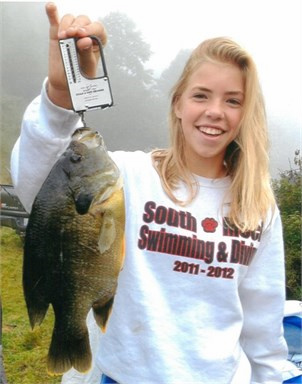
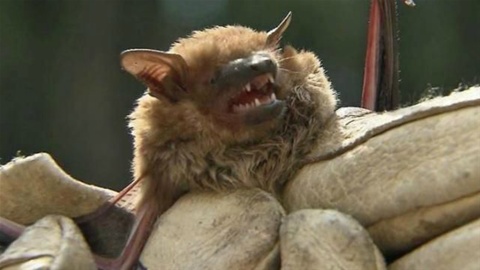
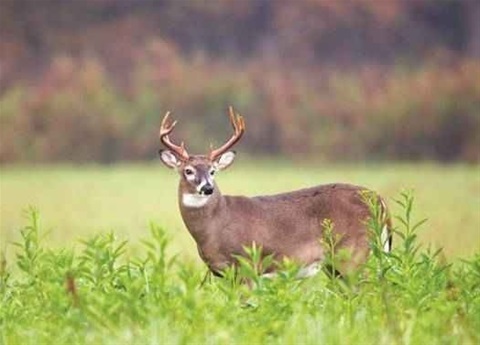
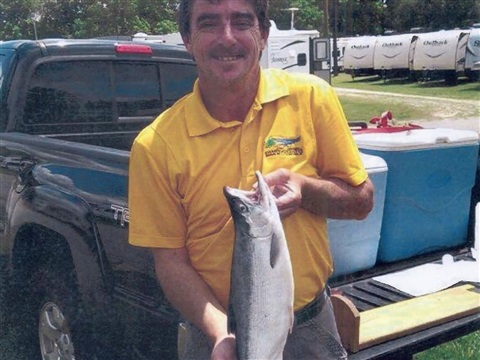
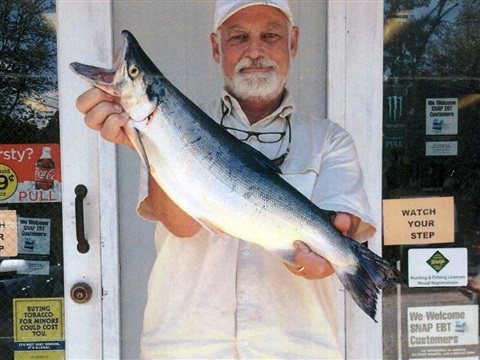
Latest comments
There is none. All that's mentioned is "native" wildlife and there are tons or restrictions there.I think there needs to be more restrictions on exotic pets just makes good sense.http://onedaytop.com/
Howdy, Mike! Welcome to my web site!
I've checked the regulations for some mention of exotics. There is none. All that's mentioned is "native" wildlife and there are tons or restrictions there.
I think there needs to be more restrictions on exotic pets just makes good sense. If allowed only qualified people with proper facilities shold be able too .But dont understand why I cant gig frogs!